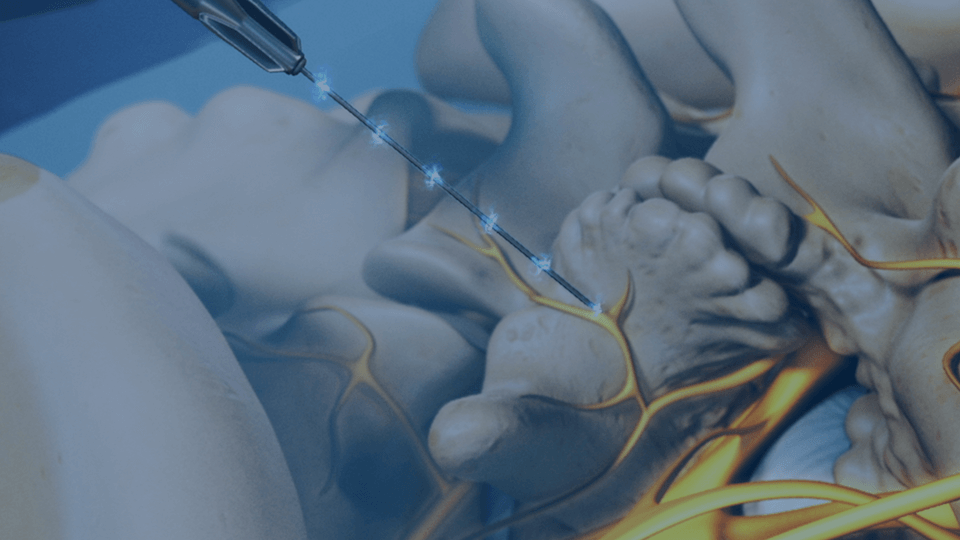- 904-223-3321 (main phone)
- 904-223-2169 (main fax)
- 904-518-4199 (new patient fax)
Radiofrequency Ablation
Radiofrequency Ablation
Radiofrequency ablation involves using electrical signals to prevent nerves from transmitting pain signals from various areas of the body. It is most used for treatment of neck, back, hip and knee pain. It is also used to treat nerve pain in various areas of the body and headaches.
Radiofrequency ablation is often recommended after a patient undergoes a facet block or medial branch nerve block and experiences significant relief.
Radiofrequency ablation is an effective treatment option for:

Benefits of Radiofrequency Ablation:
- Safe and minimally invasive
- Provides long-lasting pain relief
- No restrictions or downtime after the procedure
What To Expect
Here’s what to expect with radiofrequency ablation.
There is minimal preparation needed for radiofrequency ablation. If you are on a blood thinner, you may be instructed to discontinue the blood thinner, but it often can be performed without stopping blood thinners. For neck (cervical) facet radiofrequency ablation, it is recommended that the patient has a driver because it is common to experience some dizziness immediately after the procedure.
Radiofrequency ablation is performed in a procedure room or operating room with the patient lying on his/her stomach. The physician will use an x-ray to guide a small needle to the location of the nerves that are causing the pain. A probe is placed through the needle and electrical energy is transmitted through the probe to the nerves which deactivates the nerves and prevents pain signal from being sent.
There are usually no activity restrictions following radiofrequency ablation procedures. On average, it takes a few weeks to begin feeling relief from the procedure, but can take up to 6-8 weeks. Some people will experience discomfort following the procedure which is normal. It is often described as a sunburn feeling, throbbing, or itching.
Is Radiofrequency Ablation Right For You?
To learn more about radiofrequency ablation and if you might be a good candidate, fill out the form below to schedule a consultation.
